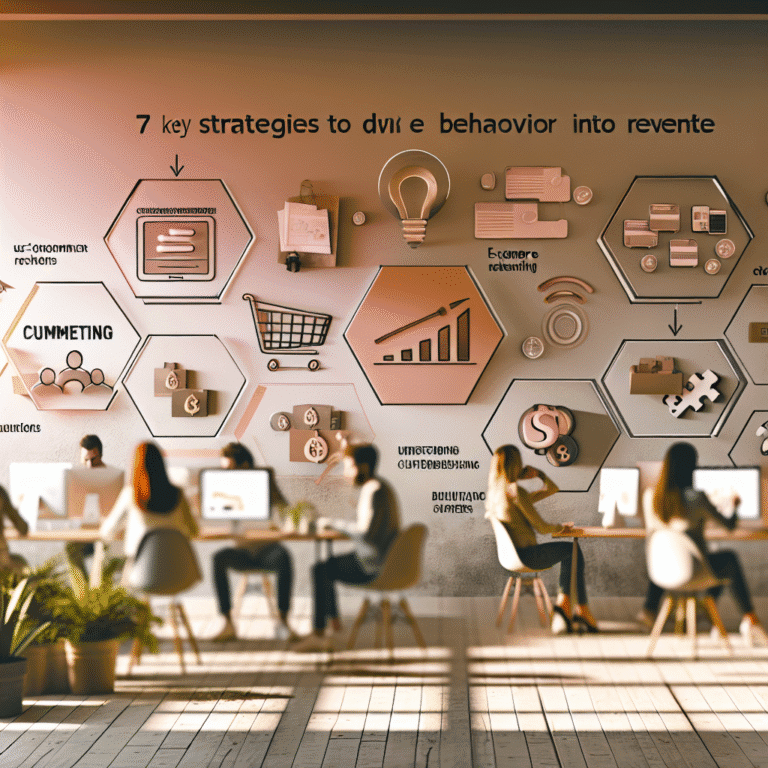Finding Steady Growth in Ecommerce
Running your ecommerce shop has probably taken a bit of your soul. Traffic’s steady, your Facebook ads are finally behaving, and Klaviyo’s being cooperative — most of the time. Yet there’s a snag: your growth isn’t quite dependable. One day, humming like a well-oiled machine, the next, it stalls. It feels like you're doing everything right; so why is it still a guessing game?
The issue isn’t your tactics, it’s your decisions. Far too often, they’re based on gut feelings, not solid evidence.
This is where having a data-driven strategy steps in. It’s not about adding another shiny dashboard but using your numbers to make smarter, quicker decisions. It’s about moving forward, not gazing back. Use data to lead growth and everything changes. Let’s get you started on that path.
Why Most Ecommerce Tricks Don’t Make the Cut
There's no end to the advice on growing an ecommerce business. Blog posts warn of “57 hacks that doubled our revenue overnight.” Twitter is full of the magical conversion rate optimisation trick — it’s all a bit overwhelming.
But when examined closely, many of these strategies tend to crumble. Why is that?
- They chase tactics, not systems
- Opinions trump insights
- They focus on shiny stats, not real profit
- Poor testing, lacking hypotheses or follow-up
This leaves you drowning in noise, desperately wishing for a signal. And it leads to burnout. Why keep on when results are so hit-and-miss?
The surprising bit? A data-driven strategy doesn’t cage your creativity. It lets you aim it more effectively.
The Loop of Data-Driven Ecommerce Growth
More tools? Nah, what you need is a loop — a system turning insight into action, action into learning, and learning into growth.
Welcome to your ecommerce growth flywheel:
1. Diagnose What’s Going On
You've got piles of data — Shopify, GA4, or ad reports. But raw data needs more depth.
- Identify where people drop off; product pages, cart, or somewhere else
- Use heatmaps and session replays to see confusion in real time
- Get the ‘why’ with exit surveys and post-purchase polls
- Segment behaviour by product, user group, or channel
If you don’t feel a tad uncomfortable, you’re not digging deep enough.
2. Prioritise the Important Stuff
You can throw spaghetti at the wall, or strategically sprinkle your parmesan.
- Use an impact/effort matrix: high-impact, low-effort wins first
- Focus on profit metrics: boosting Average Order Value beats a mere increase in site time
- Question everything: “Will this improve lifetime value, conversion, or retention?”
Don’t follow panicked competitors with trendy pop-ups. If they jumped off a bridge, would you?
3. Test and Learn, Fast
Testing isn’t about changing everything at once and hoping for the best. Create experiments that teach, even if they don’t succeed.
- Always start with a clear hypothesis: “Displaying delivery dates might increase conversion”
- Test only one variable each time — Frankenstein pages teach nothing
- Track meaningful metrics: focus on lifetime value, customer acquisition cost, and average order value
Fail quickly and move away from guesswork and towards real growth.
4. Scale What Works
When an experiment works, don’t just move on. Expand its reach.
- Look for patterns, not just flukes
- Document successes so anyone can repeat them
- Use insights in acquisition, retention, and customer service
Campaigns fade; systems grow steadily — and provide peace of mind.
The Metrics That Matter
Forget the unnecessary decimals in bounce rates. Focus on these impactful numbers:
- Customer Lifetime Value (CLV) Checklist for who you’re targeting
- Customer Acquisition Cost (CAC) One side of the financial romance
- Conversion Rate by channel Look for standout winners and underachievers
- Add-to-Cart Rate Early sign of interest, crucial learning opportunity
- Checkout Abandonment Rate Pinpoints where friction spoils the journey
- Email Revenue Percentage Measure actual profit, not just opens
- Return Rate Uncover hidden product misunderstandings
- Net Promoter Score (NPS) See loyalty trends, don’t rely on it alone
- Time Between Purchases Key for retargeting and stock planning
- Contribution Margin Per Channel Track traffic back to profit, not just volume
If your team isn’t tracking these, you might as well pick winning products by applause.
A Little Case Study on Better Questions
The biggest boost in conversions wasn’t from loads of testing, just one smart question.
We asked new customers on a survey: “What almost stopped you from ordering today?”
Top answer? “Not knowing delivery time.”
We added postcode delivery estimates on product pages — a 19% conversion boost.
Surveys reveal friction, data shows its frequency, put them together and you get real growth.
Build Your Growth Weather Station
A data-driven strategy isn’t about losing creativity. It’s about directing it where it matters.
Next time someone wants to A/B test a hunch, ask:
- What’s the goal?
- What are we changing?
- What data prompted this experiment?
Successful brands don’t rely on guesswork. They use frameworks that learn, systems that adapt, and strategies that scale deliberately.
Build your weather station, watch the wind, and then sell those umbrellas. Reliable growth doesn’t need luck, just better loops.





